The Intel Z490 Overview: 44+ Motherboards Examined
by Gavin Bonshor on April 30, 2020 10:00 AM EST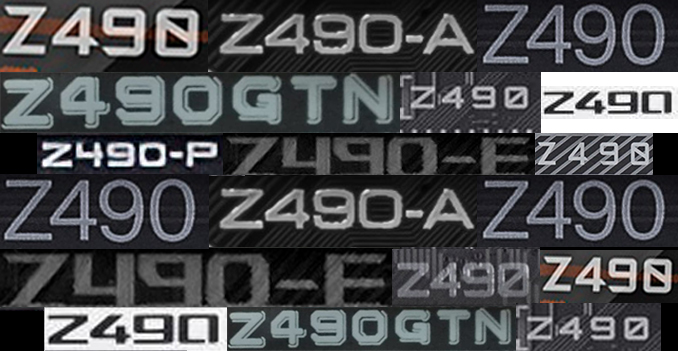
After another long wait for a new Intel platform, Comet Lake and the 400 series finally descends. Here we get a new socket, support for up to 10-cores with its flagship Core i9-10900K/KF processors, and a few interesting adjustments on ethernet, Wi-Fi. Scrambling to be the latest and greatest, some motherboard vendors include support for PCIe 4.0 'for a future platform', which some have outright identified as Rocket Lake. We asked every motherboard vendor for specifications and details on their new product lines.
This article is a work in progress, and although we have a lot of the information, new information is coming in at a rapid pace. We will endeavour to keep this Z490 Overview updated frequently with new boards, MSRP pricing, and new models that get announced.
The Intel Z490 Chipset: New Socket LGA1200
Due to the new increased power requirements of the top-end 10 core Intel processors, Intel has changed the socket once again, moving from the LGA115x family onto LGA1200. The physical dimensions of the CPU package have not changed, and all LGA115x coolers will work in the new sockets, but it does mean that these new processors won't work in old motherboards. Instead, we get a new family of 400 series, with the flagship Z490 being at the forefront of all the motherboard manufacturers' marketing materials/
From Intel, the key difference for Z490 comes in networking. Integrated into the Z490 chipset is an Intel Wi-Fi 6 CNVi which allows motherboard vendors to integrate its AX200 wireless solutions directly from the chipset with a CRF module. On Z390, this was limited to 802.11ac / Wi-Fi 5, but Intel has stepped up its game with Wi-Fi 6. Motherboard vendors still need to purchase the CRF. In a similar vein, the chipset now supports a 2.5 gigabit ethernet connection through single PCIe 3.0 x1 lane, however this requires purchase of an Intel I225 network controller. Other controllers require using a PCIe lane.
| Intel Z390, B460, Z370 and Z270 Chipset Comparison | ||||
| Feature | Z490 | B460 | Z390 | Z370 |
| Max PCH PCIe 3.0 Lanes | 24 | 24 | 24 | 24 |
| Max USB 3.1 (Gen2/Gen1) | 6/10 | ? | 6/10 | 0/10 |
| Total USB | ? | ? | 14 | 14 |
| Max SATA Ports | 6 | 6 | 6 | 6 |
| PCIe Config | x16 x8/x8 x8/x8/+4 |
x16 x8/x8 x8/x8/+4 |
x16 x8/x8 x8/x4/+4 |
x16 x8/x8 x8/x4/+4 |
| Memory Channels (Dual) | 2/2 | 2/2 | 2/2 | 2/2 |
| Intel Optane Memory Support | Y | ? | Y | Y |
| Intel Rapid Storage Technology (RST) | Y | ? | Y | Y |
| Max Rapid Storage Technology Ports | 3 | ? | 3 | 3 |
| Integrated WiFi MAC | Wi-Fi 6 | Wi-Fi 6 | Wi-Fi 5 | N |
| Intel Smart Sound | Y | ? | Y | Y |
| Integrated SDXC (SDA 3.0) Support | ? | ? | Y | N |
| DMI | 3.0 | 3.0 | 3.0 | 3.0 |
| Overclocking Support | Y | N | Y | Y |
| Intel vPro | ? | ? | N | N |
| Max HSIO Lanes | 30 | ? | 30 | 30 |
| Intel Smart Sound | ? | ? | Y | Y |
| ME Firmware | 14 | 14 | 12 | 11 |
The Z490 chipset and Intel 10th Generation Comet Lake desktop processors have a total combined PCIe count of 40, which is 16 from the CPU and 24 from the chipset. What's interesting is how similar the Z490 and Z390 chipsets are in terms of specifications, which adds the question of why Intel has opted for a new socket, on what is effectively a refresh of its 14 nm process node.
Intel retains the support of its Optane memory modules and uses dual-channel memory, up to DDR4-2933 with Core i9 and Core i7 parts, or DDR4-2666 with all other processors. The Z490 chipset also retains the same 30 HSIO used for any PCIe add-in card or controller, such as USB controllers, ethernet ports, sound cards, RAID cards, etc. Motherboard vendors use controllers such as the ASMedia ASM3242 chip to offer USB 3.2 G2 and 20 Gbps connectivity. This effectively allows vendors to implement fast Type-C connectivity.
The Z490 chipset supports overclocking with Intel's unlocked processors, which was expected. While it is not recommended to overclock the clock generator (BCLK) as it's tied into multiple areas where stability is a large factor, Intel has enabled support for DMI and PEG overclocking which has now been separated out to have no effect on SATA ports and such.
Z490 and LGA1200: Motherboards Built with PCIe 4.0?
After looking through the specification sheets of all the Z490 options, there was one obvious sticking point to all the press materials. The motherboard manufacturers all had to build their systems for processors that didn't exist yet. Those that mention they contain PCIe 4.0 also mention Rocket Lake processors, which are what we assume to be Intel's next-generation (11th Gen?) hardware. These processors will also have the same LGA1200 socket as these motherboards but clearly will have access to some form of PCIe 4.0 compatibility. This means that the motherboards have to be built with Rocket Lake in mind. That being said, we assume that Rocket Lake hasn't even been built yet - or at least, even the early stage silicon is probably not ready. This means that the motherboard vendors have to work on specifications and standards provided by Intel, some of which could possibly change by release, but also some of these specifications could drastically vary from Comet Lake (10th Gen) to Rocket Lake (11th Gen?).
We already know that PCIe 4.0 is a differentiating factor, but what about the number of PCIe lanes? Comet Lake only supports 16 lanes from the processor, and so most of these Z490 boards are built with that in mind. But if Rocket Lake supports more, say 20 PCIe lanes from the processor, then that leaves four lanes to add an M.2. In order to support this M.2 slot from the CPU on Z490, the motherboard vendors have to put in the required switches such that the slot works on both Comet Lake in PCIe 3.0 mode and Rocket Lake in PCIe 4.0 mode. Either that or disable the slot completely for Comet Lake, because it would end up reducing the main PCIe slot to an x8 due to bifurcation.
This is but one example, but depending on memory support, power support, graphics support - all of these mean that motherboard manufacturers can take Z490 in one of two ways. The one that most vendors seem to be doing is to make their boards hybrids - suitable for both Comet and Rocket, but not really mastering one. For users intending to upgrade mid-cycle without a motherboard change, these hybrid designs are probably best. The second option is to make specific boards for the specific chips, despite technically supporting both: making the Z490 the best board it can be for Comet Lake, and then some future board (Z590?) being the best board for Rocket Lake. Personally, I prefer the latter, because I'd like the best out of my processor. However, prices of the best motherboards are matching (or even surpassing) that of the processor, which makes the quandary a little more complex than on first glance.
The Current Z490 Product Stack: Over 40+ New Motherboards Unveiled
With the release of Intel's 10th generation Comet Lake CPU's offering multiple processors ranging from dual-core Celerons to the latest 10-core i9-10900K SKUs, the demand on motherboard vendors to improve on existing designs is paramount. The onus is on motherboard vendors to deliver to its target markets, whether it's gaming which Intel claims the Core i9-10900K and i9-10900KF to be the best gaming processors ever, but content creation is bigger than it has ever been too. There are seven motherboards with Thunderbolt 3, for example.
Below is the current Z490 product stack which has been announced for launch, with some models not expected to hit shelves until later on. The EVGA Dark series makes a reappearance, while MSI has its MEG, MPG and MAG stack. Also within the deep Z490 product stack are GIGABYTE Aorus and its new redesigned Vision D, or previously known as the Designare. ASUS is now on the Maximus XII range with its fabled Extreme and Formula models, with an Apex in for overclockers, as well as its Strix, Prime series, and a fresh ProArt Z490-Creator 10G model too. There will likely be even more boards announced over the coming months, with some surprises we can't discuss, all looking to make Intel's seemingly last PCIe 3.0 desktop Z series chipset a big hit with consumers.
ASRock:
Inside of the big four motherboard vendors, ASRock has the smallest product stack at launch, with more models expected over the coming months. Included in its stack is the now highly recognisable Taichi which has a pretty strong feature set and more recently announced, the flagship and water-cooled Z490 Aqua.
For gamers, the Z490 PG Velocita makes its debut with a unique naming scheme, hopefully looking to gain some notoriety. Also included is the ever-popular mini-ITX Z490 Phantom Gaming ITX/TB3 with Thunderbolt 3 rear panel connectivity one of its main features. A pair more for entry-level users includes the Z490 Steel Legend and Z490 Extreme4, which is one of its longest-standing ranges, stretching back many years.
| ASRock Z490 Motherboard Product Stack | ||
| Model | Size | Price |
| ASRock Z490 Aqua | EATX | $1100 |
| ASRock Z490 PG Velocita | ATX | $260 |
| ASRock Z490 Taichi | ATX | $370 |
| ASRock Z490 Phantom Gaming-ITX/TB3 | mITX | $280 |
| ASRock Z490 Steel Legend | ATX | $185 |
| ASRock Z490 Extreme4 | ATX | $195 |
| ASRock Z490 Phantom Gaming 4/2.5G | ATX | $160 |
| ASRock Z490 Phantom Gaming 4/ac | ATX | - |
| ASRock Z490 Phantom Gaming 4/ax | ATX | - |
| ASRock Z490 Phantom Gaming 4 | ATX | $150 |
| ASRock Z490 Pro4 | ATX | $170 |
| ASRock Z490M Pro4 | mATX | $150 |
| ASRock Z490M-ITX/ac | mITX | $160 |
| ASRock Z490 Phantom Gaming 4SR | ATX | - |
The ASRock Z490 Phantom Gaming 4 series of models offer a variety of options with different networking capability and targets the entry-level point. The base Phantom Gaming 4 model has a cost of $150, which is ASRock's cheapest Z490 model at present, while the 2.5G variant can be purchased for just $10 more coming in at $160.
ASUS:
ASUS as always has a huge product stack available for Z490, with the high-end ROG Maximus XII series with the Extreme leading the charge, to the Formula for water coolers and the Apex primarily geared up for extreme overclocking. The ROG Maximus XII Hero Wi-Fi acts as a bridge including the majority of the Maximus XII's core feature set, but with a more affordable controller set.
The gaming-focused Strix range has many alphabet models including the Z490-E, Z490-F, Z490-G, etc., while the Prime series offers a variety of models at different price points for users that want a more neutral look. Also included in the product stack is the content creator focused ProArt Z490-Creator 10G which looks good
| ASUS Z490 Motherboard Product Stack | ||
| Model | Size | Price |
| ASUS ROG Maximus XII Extreme Glacial | ? | - |
| ASUS ROG Maximus XII Extreme | EATX | $750 |
| ASUS ROG Maximus XII Formula | ATX | $500 |
| ASUS ROG Maximus XII Apex | ATX | - |
| ASUS ROG Maximus VII Hero WiFi | ATX | $399 |
| ASUS ROG Strix Z490-E Gaming | ATX | $300 |
| ASUS ROG Strix Z490-F Gaming | ATX | $269 |
| ASUS ROG Strix Z490-G Gaming | mATX | - |
| ASUS ROG Strix Z490-G Wi-Fi Gaming | mATX | - |
| ASUS ROG Strix Z490-A Gaming | ATX | - |
| ASUS ROG Strix Z490-I Gaming | mITX | $300 |
| ASUS TUF Z490-Plus | ATX | - |
| ASUS TUF Z490-Plus WiFi | ATX | $200 |
| ASUS Prime Z490-A | ATX | $230 |
| ASUS Prime Z490-P | ATX | $160 |
| ASUS Prime Z490M-Plus | mATX | $150 |
| ASUS ProArt Z490-Creator 10G | ATX | - |
Biostar:
Biostar has just three models at launch, with two ATX sized models via the Z490GTA EVO, and Z490GTA, and a mini-ITX model, the Z490GTN.
| Biostar Z490 Motherboard Product Stack | ||
| Model | Size | Price |
| Biostar Racing Z490GTA Evo | ATX | $239 |
| Biostar Racing Z490GTA | ATX | $209 |
| Biostar Racing Z490GTN | mITX | $199 |
EVGA:
Normally bringing its models later on in the product cycle, EVGA has announced models for Intel's Z490, the EVGA Z490 Dark which is heavily stacked on overclocking features. At the same time, the EVGA Z490 FTW WiFi offers users a solid-option for the mid-range.
| EVGA Z490 Motherboard Product Stack | ||
| Model | Size | Price |
| EVGA Z490 Dark | EATX | - |
| EVGA Z490 FTW WiFi | ATX | - |
GIGABYTE:
GIGABYTE has opted for a mixture of models in its product stack with a wave of Aorus branded boards aimed at gamers and enthusiasts, with some new additions and re-works to previous models on other chipsets. In a move to shorten some of its model names for Z490 (on the most part), we see a couple of models with subtler aesthetics including the new Z490 Vision D and Z490 Vision G. The GIGABYTE Z490 Vision series includes a couple of models, with the Z490 Vision D and Vision G seen as a direct replacement to the Designare series; the Vision G has with a clean aluminium aesthetic.
Other models making a return include the Aorus Xtreme, with the Xtreme WaterForce model decked with a custom water block, and an eye-watering price to go with it. Other regular Aorus mainstays in the stack include the Aorus Ultra, Aorus Master, and Aorus Elite. For small form factor aficionados, there's also the mini-ITX Z490I Aorus Ultra, with the micro-ATX Z490M Gaming X expected shortly.
| GIGABYTE Z490 Motherboard Product Stack | ||
| Model | Size | Price |
| GIGABYTE Z490 Aorus Xtreme WaterForce | EATX | $1299 |
| GIGABYTE Z490 Aorus Xtreme | EATX | $799 |
| GIGABYTE Z490 Aorus Master | ATX | $389 |
| GIGABYTE Z490 Aorus Ultra | ATX | $299 |
| GIGABYTE Z490 I Aorus Ultra | mITX | $269 |
| GIGABYTE Z490 Aorus Pro AX | ATX | $269 |
| GIGABYTE Z490 Aorus Elite AC | ATX | $219 |
| GIGABYTE Z490 Gaming X | ATX | $200 |
| GIGABYTE Z490M Gaming X | mATX | - |
| GIGABYTE Z490 Vision D | ATX | $299 |
| GIGABYTE Z490 Vision G | ATX | $199 |
MSI:
The MSI Z490 product stack consists of many previously seen before models including its flagship EATX sized MEG Z490 Godlike, with the Z490 Ace, and the more recent Unify range. MSI's only mini-ITX model comes under the MEG enthusiast gaming banner via the Z490I Unify, while the MPG range offers a good range of features for the mid-range.
Towards the bottom of the stack is the MAG Z490 Tomahawk, which is usually reserved for the budget B chipsets, and the MSI Z490-A Pro caters to entry-level users. It's worth noting that from top to bottom, every MSI Z490 motherboard has a Realtek RTL8125G 2.5 G Ethernet port or better.
| MSI Z490 Motherboard Product Stack | ||
| Model | Size | Price |
| MSI MEG Z490 Godlike | EATX | $750 |
| MSI MEG Z490 Ace | ATX | $400 |
| MSI MEG Z490 Unify | ATX | - |
| MSI MEG Z490I Unify | mITX | - |
| MSI MPG Z490 Gaming Carbon WIFI | ATX | $270 |
| MSI MPG Z490 Gaming Edge WIFI | ATX | $200 |
| MSI MPG Z490M Gaming Edge WIFI | mATX | - |
| MSI MAG Z490 Tomahawk | ATX | $190 |
| MSI Z490-A Pro | ATX | $160 |
Supermicro:
More focused on its server-grade and workstation motherboards, Supermicro has just two models announced for Z490, the C9Z490-PGW and C9Z490-PG. The only difference between the two is a wireless interface, while both these models are the only Z490 models to leverage a PLX chip for PCIe lane bifurcation.
| Supermicro Z490 Motherboard Product Stack | ||
| Model | Size | Price |
| Supermicro C9Z490-PGW | ATX | $395 |
| Supermicro C9Z490-PG | ATX | $375 |
On the next page is a summary of each board's power delivery system, with each subsequent page containing a brief analysis/rundown of all the individual Z490 boards.


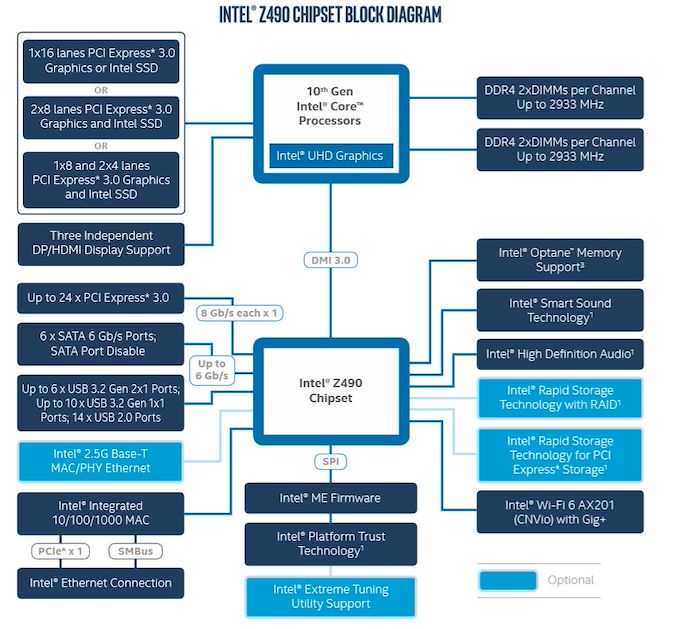

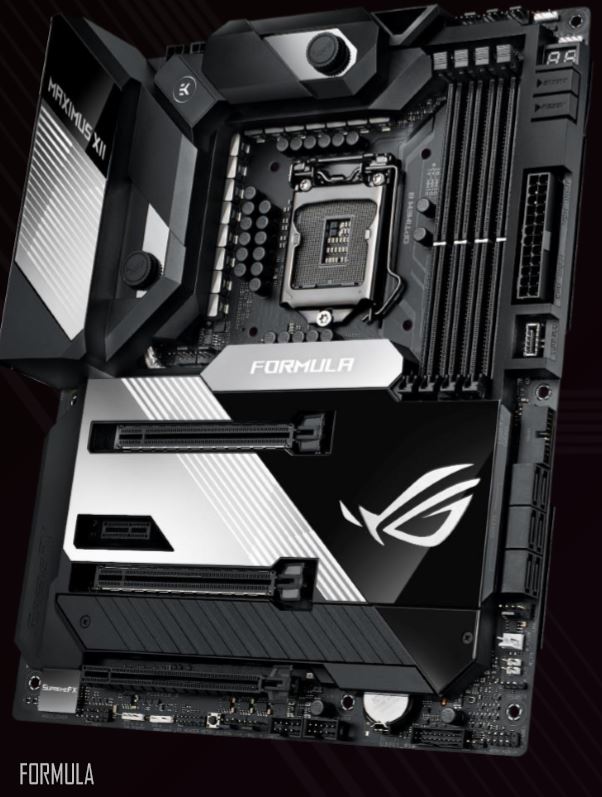
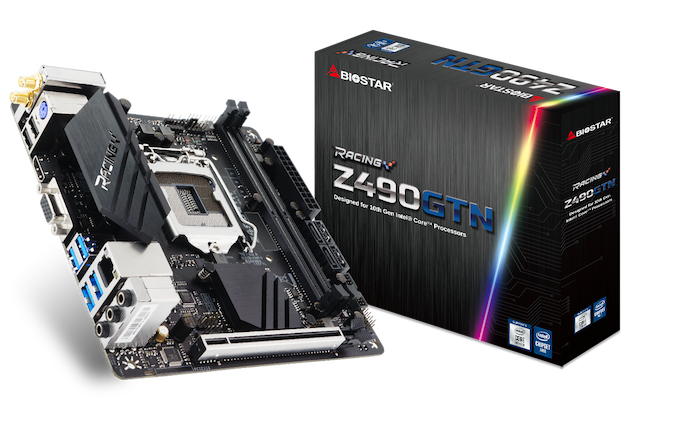
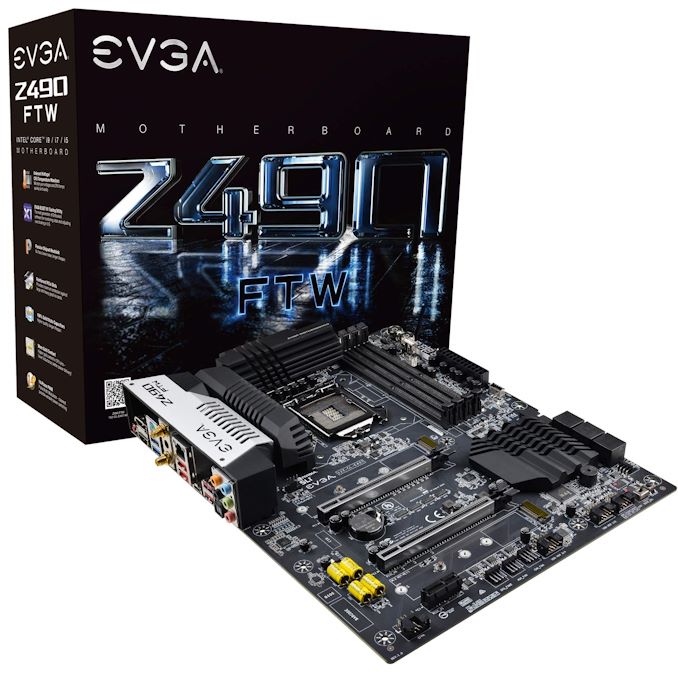
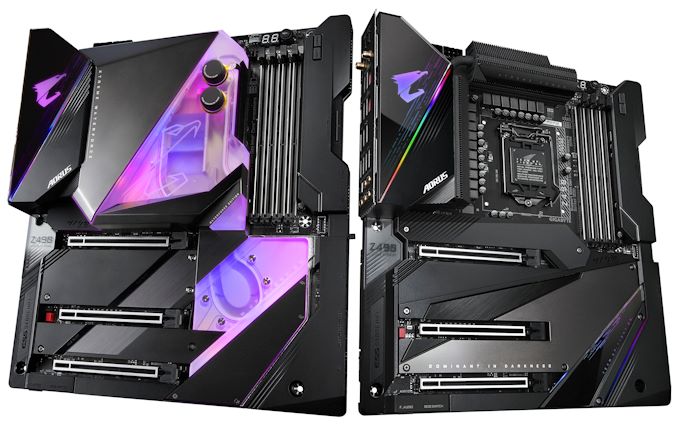
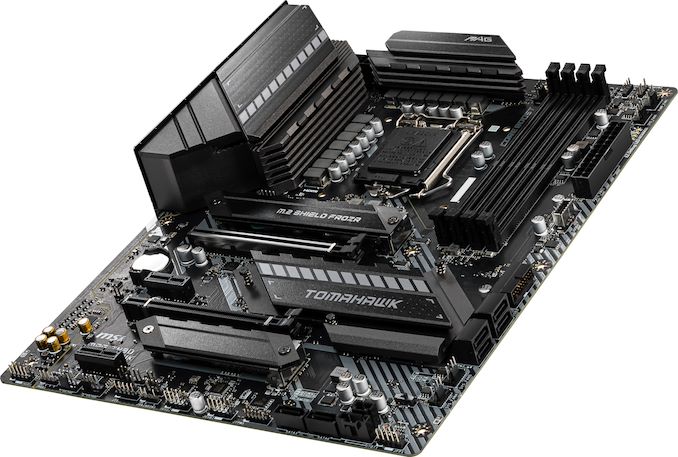
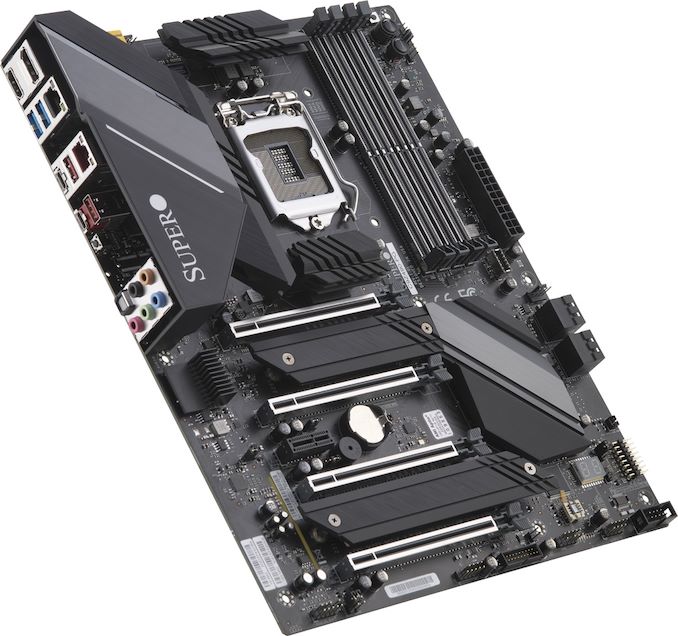








52 Comments
View All Comments
Andrew LB - Saturday, May 9, 2020 - link
So these boards bring Wifi6, PCI-Express 4.0, gigabit 2.5, and for people like myself who are upgrading from a Z87 board.... just about everything is a huge leap.... yet you think there is just 'more of the same'? I guess if you're one of those idiots who buys a new CPU every year, then clearly this is not the release for you. Nor would AMD's latest offerings if that same metric is applied.So what's your problem with Capitalism? Do incremental design improvements offend you? Or is it profit that does? Hate to break it to you, but its profit motive that fuels innovation. Collectivism is a cancer and by its very nature hinders progress due to it not rewarding exceptionalism. It's why countries like China don't innovate. Otherwise they wouldn't need forced technology transfers from those who manufacture goods in their country.
Zenzdeluxe - Wednesday, September 2, 2020 - link
Thanks for that. The hypocrisy of these people. Imagine imbibing in the fruits of the capitalist system which besides continuing innovation, provides more spoils at lower price points for everyone than ever before. The audacity of such entitlement and seemingly collectivist / marxist based criticism is mind boggling. Cognitive dissonance off the scale indeed.ilkhan - Friday, May 1, 2020 - link
Details page for GIGABYTE Z490 Aorus Pro AX (copy and paste because who can keep them straight otherwise) makes a big deal of no usb-C, but it's there in the picture...ecjp - Friday, May 1, 2020 - link
Yeah, I noticed that too. Gigabytes site shows same picture and lists "1 x USB Type-C™ port on the back panel, with USB 3.2 Gen 2 support" in the specs, so I assume its an error in the article.gavbon - Friday, May 1, 2020 - link
Thanks for picking that up. I must have been writing about the wrong board. Apologies, it's updatedregsEx - Friday, May 1, 2020 - link
"Integrated into the Z490 chipset is an Intel Wi-Fi 6 CNVi which allows motherboard vendors to integrate its AX200 wireless solutions directly from the chipset with a CRF module."CNVi is an old generation 802.11ac controller. Here it is CNVio2. CRF module is AX201. AX200 is a standalone controller that can work on any system. X570 motherboards with 802.11ax support, for example, packs with AX200 card.
lunaticbunny - Friday, May 1, 2020 - link
There are no boards under $200. Seems like this Z490 chipset got the X570 inflation treatment as well.drexnx - Friday, May 1, 2020 - link
just like the X570 boards, they've all got seriously beefed up VRMsand maybe the pcie4 tax wasn't just a cash grab? we'll really see when AMD B550 comes out, where those board prices land
Andrew LB - Saturday, May 9, 2020 - link
Plenty of boards under $200.ASUS Prime Z490M-PLUS
GIGABYTE Z490 AORUS Elite
ASUS TUF Gaming Z490-Plus
ASUS TUF Gaming Z490-Plus wifi
GIGABYTE Z490 UD
MSI Z490-A PRO ProSeries
A bunch of Asrock boards will be under $200 as well. You can see many prices already on Amazon.
dgingeri - Friday, May 1, 2020 - link
It looks like, potentially, at least Gigabyte has decided to include a decent number of USB ports. I can't tell with the Asus board, but all the rest look to have only 6 USB ports, an annoyingly small number. I have been really annoyed with the lack of USB ports on boards for the last 5 years. Heck, with the old 440BX boards, we had 2 ps2, 4 or 6 USB, 1 or 2 serial, and a parallel port. We've lost the other ports, and internal drives in most computers, and not gained USB ports to compensate for it. External hubs aren't going to do it, either, as those stupid things keep dying in a matter of months.